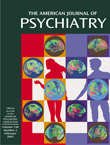To the Editor: Muhammad M. Mamdani, Pharm.D., M.A., M.P.H., et al.
(1) recently reported that the prevalence of antidepressant use among the elderly population of Ontario increased from 9.3% in 1993 to 11.5% in 1997—a 24% increase from baseline. Annual antidepressant costs in this population increased by 150%, from $10.8 million in 1993 to $27 million in 1997. These increases were mainly accounted for by steady growth in the use of selective serotonin reuptake inhibitors (SSRIs). The authors lauded the increased use of antidepressants (on the assumption that more cases of late-life depression are now being treated) but questioned the cost-effectiveness of prescribing SSRIs in favor of the less expensive tricyclic antidepressants. In particular, they argued that there is little evidence from meta-analyses of controlled trials that SSRIs and tricyclic antidepressants differ in efficacy or overall frequency of adverse effects
(1).
Unfortunately, the rigor of prescribing tricyclic antidepressants in research studies usually does not carry over to practice in the community. There is abundant evidence that in primary care settings, where most antidepressants are used, tricyclic antidepressants are seldom prescribed at doses that are effective for the treatment of major depression
(2,
3). Moreover, the most frequently prescribed tricyclic antidepressants are tertiary amine drugs
(3,
4), which are probably least likely to be tolerated by elderly patients
(5). In contrast, the vast majority of patients treated with SSRIs receive an effective dose
(2,
3). Also, in clinical practice settings, discontinuation rates appear to be lower for SSRIs than for tricyclic antidepressants
(4,
6). Thus, there is good reason to believe that a prescription for an SSRI is more likely to result in adequate treatment of depression in elderly patients than is a prescription for a tricyclic antidepressant.
Although the overall frequencies of side effects may be similar for tricyclic antidepressants and SSRIs, there are important differences between these drugs in types of side effects. In particular, SSRIs do not have significant anticholinergic, hypotensive, or cardiac effects, and so, compared with tricyclic antidepressants, there are fewer limitations to their use in the elderly
(5). Thus, a broader spectrum of elderly depressed patients can now be treated. Furthermore, persons aged 80 years or older, who are most likely to have medical or neurological conditions that limit the use of tricyclic antidepressants
(5), are proportionally the fastest growing segment of the population
(7). This suggests that a diminishing percentage of elderly patients will be candidates for tricyclic antidepressants in the years to come.

